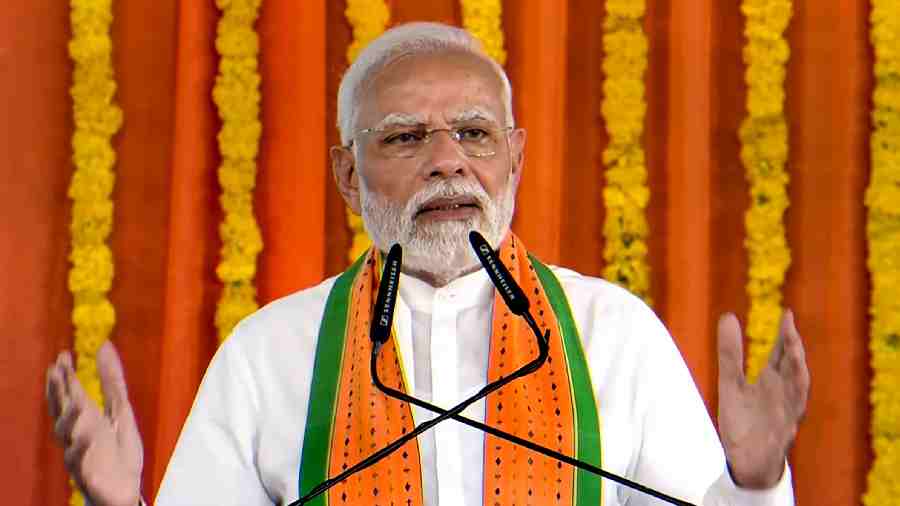Prime Minister Narendra Modi on Monday warned the people of poll-bound Gujarat against “urban Naxals” who had arrived in a “nawa rang roop” (new disguise) to woo “innocent energetic youths”.
The warning, which the Prime Minister issued while addressing a crowd at Amod in Bharuch district, was seen as a veiled attack on Arvind Kejriwal-led Aam Aadmi Party, which is reportedly drawing good crowds in Modi’s home state.
Modi was in Bharuch to inaugurate and lay the foundation stones of development projects.
At another public meeting organised by the BJP in Anand, Modi warned party leaders and workers against complacency by assuming that the Congress was no more a force in the state.
“The Congress is very silent but don’t assume that it is finished… They (Congress) are silently going around holding meetings in villages… The Congress even today doesn’t spare a chance to insult the country and so keep an eye on them,” Modi said in Anand.
With the Gujarat Assembly election dates likely to be announced later this month, Modi has been travelling to the state frequently and making speeches that are part of his pre-election campaign style.
His speech in Bharuch assumes significance because he sought to target the AAP without taking the its name. After initially seeking to dismiss the AAP as “no factor at all”, the BJP has of late been going all out to slam Kejriwal and project him as “anti-Hindu”.
“I remember the days when obstructions were put in the path of Bharuch’s industrialisation. People with a Naxal mindset obstructed the Narmada dam,” Modi said, seeking to recall the protests by activist Medha Patkar against the construction of the dam. He sought to claim credit as the chief minister of Gujarat for not allowing Naxalism to grow in the tribal belts of the state, saying it had ruined the lives of people in many states.
“But now the urban Naxals have arrived in a new disguise. They are trying to woo the innocent energetic youths. Don’t allow your youngsters to fall for them. They are bringing foreign powers to ruin your life,” Modi said.
The BJP has been portraying the AAP as “urban Naxal” by recalling how the party had fielded Patkar to contest the Lok Sabha polls from Mumbai.
Modi’s veiled attack on the AAP was viewed by many as the top leader betraying jitters apprehending a serious challenge from the relatively rookie party that was seeking to expand wings after its first big success outside Delhi recently.
Others, including a section of the BJP, however, saw a well-planned tactic to build the perception that the AAP was a rising force in Gujarat to split anti-incumbency votes between the Congress and the AAP and paving the way for a big BJP victory.
Despite the Modi-Shah brand of politics having deep roots in Gujarat, nearly one-third of the state has always voted for the Congress. In the last election, the Congress came nearly close to defeating the BJP by riding the simmering discontent in rural areas. The BJP could manage to win just 99 seats in the 182-member Assembly.
The AAP is now trying to usurp the support base of the Congress and emerge as the principal Opposition in the state. Kejriwal has been frequently travelling to Gujarat and drawing big crowds. Apart from slamming the BJP, he has been telling the voters that the Congress is finished.
However, BJP surveys have revealed that the AAP was making significant inroads into major urban pockets of the state, considered the backbone of the saffron party. “We are wary that the AAP will gain a foothold in the urban areas and emerge as a threat in the future,” a Gujarat BJP leader said.
The anti-Hindu campaign against Kejriwal forced the AAP to compel one of its ministers in Delhi, Rajendra Pal Gautam, to resign for his participation in an event where 10,000 people reportedly took B.R. Ambedkar’s 22 vows, including the renunciation of Hinduism, and affirmed their faith in Buddhism.
Modi in all his addresses has been trying to recall how the Gujarat model of development had emerged under him and emphasising that the state’s “bond with the BJP was unbreakable”.











